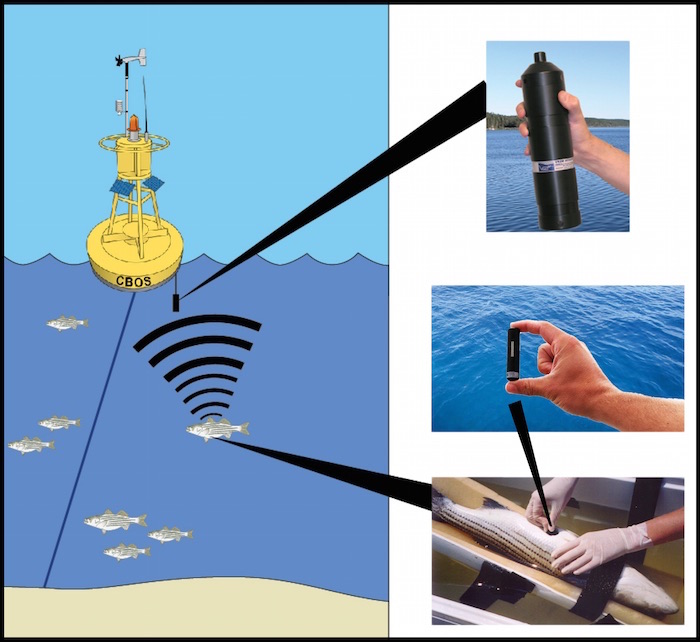CBL Professor Dr. David Secor is tracking the migration patterns of the Chesapeake’s most popular fish to catch and eat: the striped bass.
For the Potomac and Atlantic Striped Bass Telemetry Study (PAST), Secor’s team is using a method called acoustic telemetry to follow 100 striped bass as they move from the Potomac River to the Chesapeake Bay and other waterways along the Atlantic coast.
PAST aims to improve knowledge of striped bass migration patterns. For example, when do fish migrate by season, size, and age group, where do they go when they leave the Chesapeake, and how frequently do they return to the tributaries where they were born? This information will be used to improve striped bass stock assessments, which allow marine managers to adjust fishing regulations to prevent overfishing and keep the population of this savory species at a sustainable level.
Acoustic Telemetry: How Does it Work?
 Researchers have surgically implanted a thumb-sized tag called an acoustic transmitter into each of the 100 fish included in the PAST study.
Researchers have surgically implanted a thumb-sized tag called an acoustic transmitter into each of the 100 fish included in the PAST study.
CBL researchers have deployed listening devices, called receivers, in the Potomac River and middle Bay. Receivers throughout the rest of the Bay and other Atlantic waterways, installed by other institutions and for other projects, will also be used to track fish tagged for PAST.
The transmitters implanted in PAST fish will give off sound signals that are picked up and recorded by these receivers whenever tagged fish swim nearby. It is like E-ZPass for fish!
The fish will be tracked for two and a half years, beginning in March 2014.
Read more: http://fishconnectivity.cbl.umces.edu/PAST
Follow Secor Lab on Twitter: @SecorLab

